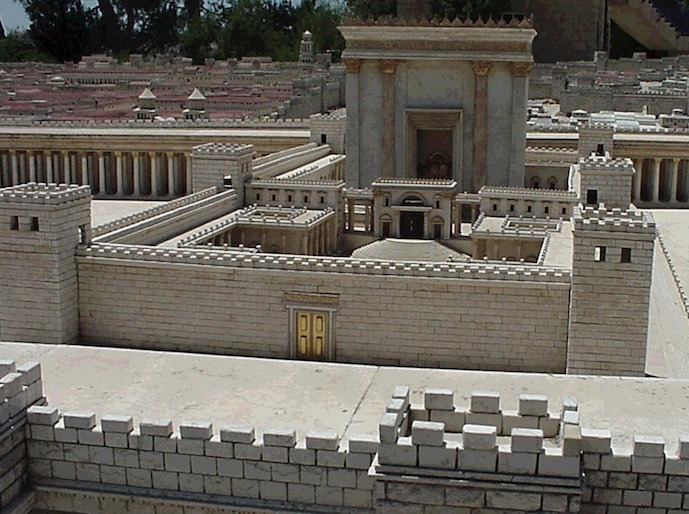Isaiah is full of pictures of the Messiah and the coming kingdom of God. One of the first that we encounter is a vision for the messianic age is in Isaiah 2. It says,
Now it will come about that in the last days
The mountain of the house of the LORD
Will be established as the chief of the mountains,
And will be raised above the hills;
And all the nations will stream to it.
And many peoples will come and say,
“Come, let us go up to the mountain of the LORD,
To the house of the God of Jacob;
That He may teach us concerning His ways
And that we may walk in His paths.”
For the law will go forth from Zion
And the word of the LORD from Jerusalem. (Is. 2:2-3)
Isaiah is full of rich words and images to express God’s promises. If we can see the thoughts behind the pictures, the beauty becomes all the more evident. Let’s read through this poem, getting a sense of the word-pictures and the ideas behind them:
The mountain of the house of the LORD will be established as the chief of the mountains.
The mountain of the house of the Lord is the temple mount of Jerusalem. Jerusalem was built on Mt. Moriah, so when a person goes to Jerusalem, they always go up. If you go to visit, you will always remember the long climb that the buses make up the hill into Jerusalem. Even today in Hebrew, the Temple Mount is called Har HaBeit, which means “mountain of the house.” Throughout the Bible, the Temple is often referred to simply as “the house.”
Putting the Temple on the highest mountain in Israel was intentional. Shrines to worship gods were always established on hilltops, which were called “high places” in the Old Testament. God commanded the Israelites to destroy the idols on all of the high places, even though they never really did.
The picture in Isaiah 2 is of the mountain of the Temple being “raised up” over all of the high places where idols are worshiped, and the peoples around them realizing that the God of the Jews is the real God.
And all the nations will stream to it. And many peoples will come and say,
“Come, let us go up to the mountain of the LORD…
The word “nations” in Hebrew here, goyim, has a stronger connotation than it does in English. It often refers to entire nations, including Israel. But it is also translated as Gentiles, specifically those that are not Jewish. It often carries an assumption of pagan-ness, that one is referring to the nations that surrounded Israel who worshiped idols and practiced immorality. Once again, Isaiah 2 paints a picture of the lost sinners of the world finding the God of Israel and wanting to worship Him.
That He may teach us concerning His ways, and we may walk in His paths. For the law will go forth from Zion, and the word of the LORD from Jerusalem.
When foreigners who do not know God come to Jerusalem, they want him to teach them his ways, so his torah will go out from Jerusalem. It is important to note that the word for teach, yarah, is the verb form of torah, teaching or instruction. In response to their desire to have God teach them, they will have God’s teaching (torah), instruction for how to live.
The words walk, lekh, and way, derekh, are frequent metaphors used when speaking about having a covenant relationship with God. Lekh means walk, but as Hebrew words tend to be very broad, it often describes a general life direction. Derekh means road, path, or street, but often is a metaphor for a way of living. To “walk in God’s ways” is to live out a relationship with God. Many times God says to Israel,
Now, Israel, what does the LORD your God require from you, but to fear the LORD your God, to walk in all His ways and love Him, and to serve the LORD your God with all your heart and with all your soul? (Deut. 10:12)
In the book of Acts, the first Christians refer to themselves as “the people of the Way.” They often spoke of their movement as “The Way,” using this imagery to describe living out the teaching that Jesus gave them. They are thinking of learning from Jesus how to live in relationship with God.
The Fulfillment of Isaiah 2
The picture in Isaiah is of a coming time when people from all the Gentile nations will seek the God of Israel, to know and worship the God of the Jews. They will want to know the Lord and have a relationship with him, which is what salvation is in this life. It will begin at Jerusalem and go out to the ends of the earth.
The fulfillment first began at Pentecost, when people in the Temple were filled with God’s Spirit, and the gospel began to be poured out on all the world beginning in Jerusalem. In Acts 10 the first Gentile, Cornelius, was filled with the spirit and all his family became believers. This was a shock to Peter and the rest of Jesus’ Jewish disciples but the prophets had envisioned it long ago.
Then Paul brought the gospel to the Gentiles. It is still being fulfilled today as the all the nations of the world are hearing about the God of the Jews, how he came to earth to make a covenant of forgiveness of sin with his own blood. He came to walk on earth with us, so that we can learn to walk with him.
~~~~
Photos: “Temple Model” by Lois Tverberg, “Temple Mount” from bibleplaces.com, Henry Xu on Unsplash




